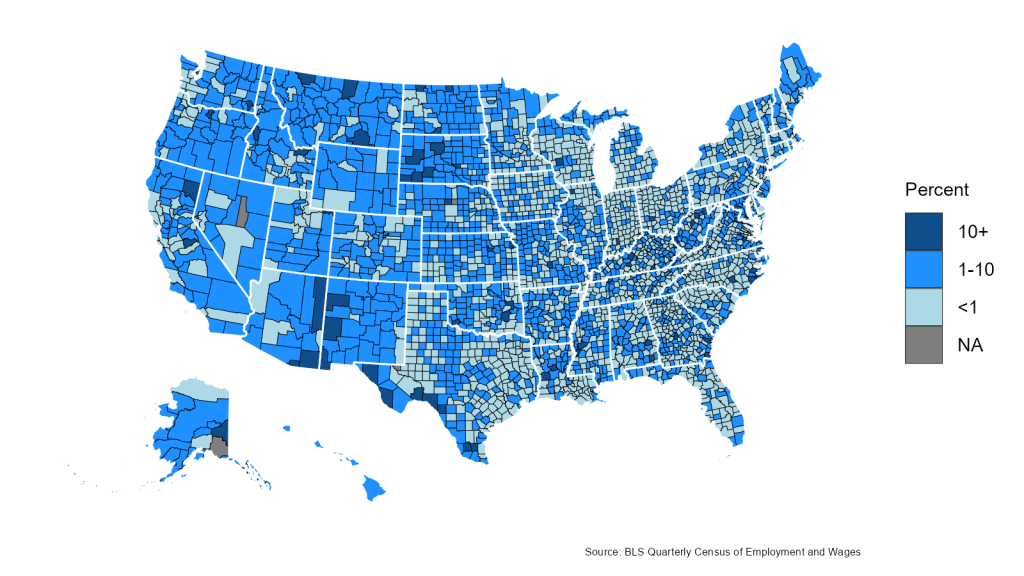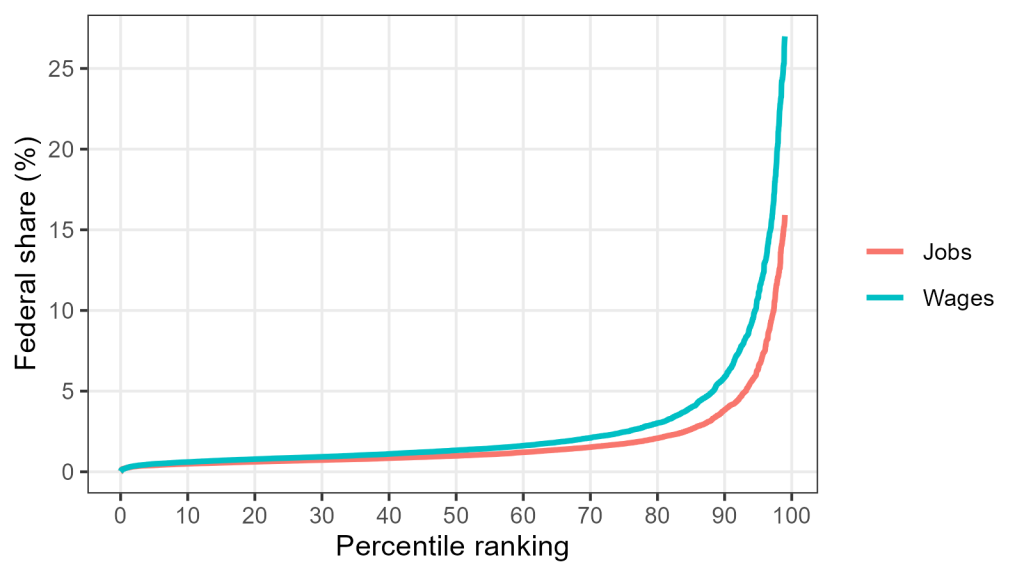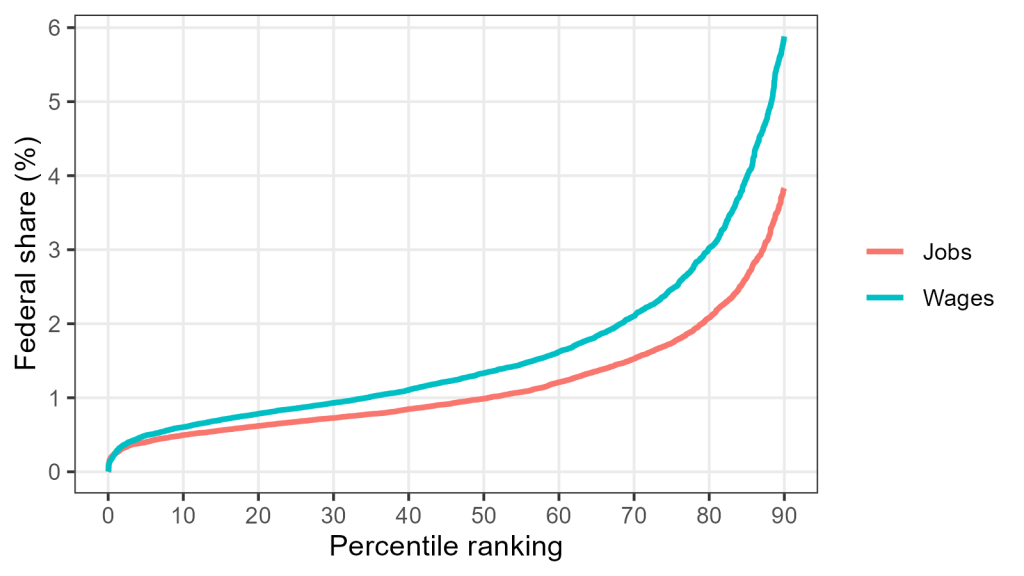Donald Trump’s hatred for Washington, DC, is well-documented. He has tied his campaign to cut federal jobs explicitly to draining “the swamp.” These cuts to the federal workforce will devastate everything from food safety to disease research and cybersecurity. Sometimes missing in the justified outrage at these job cuts is that their impact will reach far beyond the DC area. I used the Bureau of Labor Statistics’ Quarterly Census of Employment and Wages to look at which counties will suffer the most from Trump’s cuts—both due to lost services provided by federal workers and through economic damage from lost jobs.
The QCEW classifies all civilian employees in each county by whether their employer is a private enterprise, local government, state government, or federal government. I pulled the data for 2023 and generated the percentage of employees in each county who work for the federal government. Of the 3,142 counties and independent cities in the QCEW, 84 have at least 10 percent of the workforce employed by the federal government. Only five of those counties are in the DC area.
The map below shows the share of federal employees in each county by category: less than one percent, between one and ten percent, and over ten percent. Just under half of the counties in the country have at least one percent of their workforce employed by the federal government. Counties in the western part of the country are especially likely to have at least one percent of their workforce employed by the federal government. Scattered throughout the country are counties with particularly high shares of federal employees.

One of these counties with a very high share of employees working for the federal government—higher than any other county in the country—is Martin County, Indiana. A whopping 61 percent, or about 4,800 of the 7,900 people employed in the county work for the federal government. This appears largely driven by the Naval Surface Warfare Center located in the county. The Martin County Alliance for Economic Growth boasts of the “over 3,000 STEM workers, 1,000 engineers, and dozens of PhDs in a federal research lab setting” working at the center—exactly the kind of jobs the administration is eliminating. While traditionally you might think civilian Department of Defense jobs would be safe in a Republican administration, Secretary of Defense Hegseth has ordered the DoD to come up with massive cuts.
Another way to illustrate the extent to which the federal government employes people all over the country is graphically. I created a percentile ranking for each county by the share workforce that is employed by the federal government, so the county with the highest share of federal employees is the 100th percentile and the counties with no federal employees are in the 1st percentile. The graphs below plot the percentile ranking on the horizontal and the share of the county’s workforce that is employed by the federal government on the vertical axis. I also created the same ranking for the share of total wages earned in a county that are earned by federal employees. The first graph shows the full x-axis, and the second graph limits the axis to the 90th percentile, to show more detail.


Looking at the first graph, the median county has about one percent of its workforce employed by the federal government. Additionally, the wage line is consistently above the employment line. This demonstrates that federal jobs pay better than the average job, which means that the loss of these jobs would be even more devastating to local economies.
A couple of other specific counties help illustrate the point. About 28 percent of workers in the small county of Buffalo, South Dakota, are employed by the federal government. It seems likely that these are mostly employees of the Indian Health Service and Bureau of Indian Affairs, because of much of the county is part of the Crow Creek Indian Reservation. Nearly 50 percent of the wages earned in this county are earned by federal employees. If those jobs were lost, not only would residents’ health suffer, but their economy would as well.
In Harlan County, Kentucky, just over one percent of employed people work for the federal government. This is not as large a share as some other counties, but these workers play a crucial role in the county, as many are employed at the Mine Safety Health Administration. How long they continue to work there is apparently an open question: the Harlan County office of the MHSA, along with other MHSA offices in Kentucky, appeared on the list of government buildings whose leases may be terminated.
Federal employees are all over the country. These are doctors, park rangers, food safety inspectors, air traffic controllers, mine safety managers, among others. If they lose their jobs, the impacts—both the loss of the work they perform and the macroeconomic impact of higher unemployment—will be felt in every community in the country.

